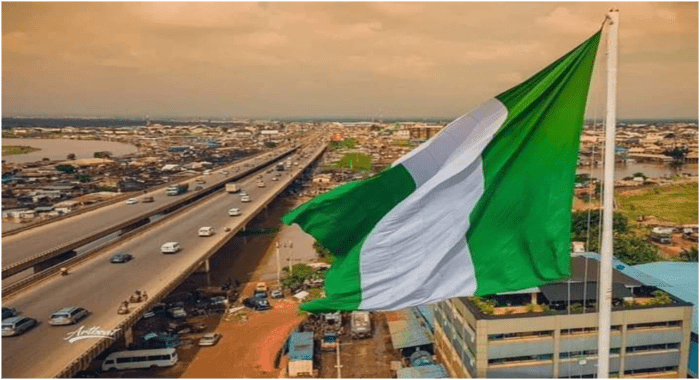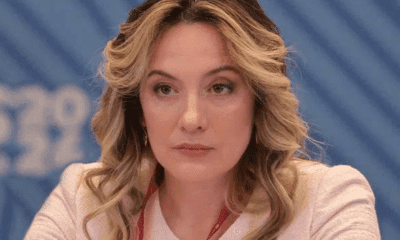Legal Issues
An Examination Of Patent And Design Protection In Nigeria: Prospects And Problems -By Oyetola Muyiwa Atoyebi & Pwaveno Ditto
Another problem facing the protection of patents and designs in Nigeria is that the law that regulates patents and designs in Nigeria, the Patents and Designs Act, does not fully anticipate modern methods of infringement of patent rights through modifications and process alterations. This has made varying acts that infringe the rights of an inventor unsanctionable.

INTRODUCTION
In the wake of globalization and the increase in intellectual property concerns, the need to protect the intellectual rights of authors and inventors has become a topical issue of global interest. This is as a result of the recognition of the fact that every individual needs to optimally benefit from efforts and resources expended by him/her. Several measures of protection have thus been put in place for the protection of intellectual property works. Foremost among these measures are Patents and Designs.
A patent is an exclusive right granted to an inventor to protect the function and workings of the invention. A design on the other hand also protects the product but the distinguishing factor is that while a patent is concerned with the functionality of the invention, design protects the physical appearance of the product. This means that while a patent protects the idea that runs the invention, the look of the invention is what a design is concerned with, provided that the appearance is distinctive[1]. This does not however include other aspects of the brand that are ordinarily covered by trademark such as the logo.
For the purpose of this article, patent and design protection shall be discussed collectively for ease of communication and better understanding.
PROCEDURE FOR PATENT AND DESIGN PROTECTION
It should be noted most importantly that while patent only covers inventions, not all inventions are considered patentable.
Section 1 of the Patents and Designs Act[2]provides the grounds that qualify an invention for patent protection as follows:
(1) Subject to this section, an invention is patentable–
(a) if it is new, results from inventive activity and is capable of industrial application; or
(b) if it constitutes an improvement upon a patented invention and also is new, results from inventive activity and is capable of industrial application.
The first condition from Paragraph (a) states that the invention must be one that is new. A perusal of Section 1(3) of the Patents and Designs Act indicates that for an invention to be considered new, it must not be one known to the public not just in Nigeria, but anywhere around the world. A further examination of this subsection shows that to satisfy the condition of novelty required for a product to qualify for a patent, no part of the idea must have been previously exposed to the public in any form or described through a written or oral medium. This can be interpreted to mean that it must not have been described in a book or through public speech.
Section 1(1)(b) of the Patents and Design Act which gives the second manner of invention that can be regarded as patentable provides that improvements to an invention by the expedition of inventive activity qualifies a product for patent. Section 1(2)(b) of the Patents and Design Act further states that what can be considered an improvement to an invention must be one that does not follow the normal state of art in respect of the methods or results produced.
Furthermore, the guideline for application of patents and designs in Nigeria is set out in Section 3-5 of the Patents and Designs Act. It provides that an application should be made to the Registrar containing the applicant’s full name and address and, if that address is outside Nigeria, an address for service in Nigeria, a description of the relevant invention with any appropriate plans and drawings, a claim or claims accompanied by-
(i) The prescribed fees;
(ii) Where appropriate, a declaration signed by the true inventor requesting that he be mentioned as such in the patent and giving his name and address.
More so, if the application is made by an agent, a power of attorney must be submitted. The Registrar is expected to determine the patentability or otherwise of patent applications before a grant is made. This examination is merely formal in nature and does not require a scientific examination as such is outside the scope of the duties and powers of the Registrar, as the Registrar is simply to ensure conformity with the requirements of the Act.
The Registrar would then issue a certificate evidencing the date of application, the number of the patent, as well as the name and address of the patentee followed by a publication of the grant[3].It should be noted that a patent is only valid for 20 years after the grant of the patent application.
For the protection of “design”, the Act provides that any design that is new and not contrary to public policy or morality is registrable. It also provides that where the design has otherwise been shown to the public, the registrar must be satisfied that the creator is unaware of this fact[4].
The Act further provides that to register an industrial design a request for registration of the design shall be made to the Registrar containing
“the applicant’s full name and address and, if that address is outside Nigeria, an address for service in Nigeria; a specimen of the design or a photographic or graphic representation of the design with any printing block or other means of reproduction from which the representation was derived, an indication of the kind of product (or, where a classification has been prescribed, the class of product) for which the design will be used, such other matter as may be prescribed”[5]
This application is to be accompanied by the prescribed fee, and where necessary, a declaration signed by the true creator requesting that he be named as such in the register inclusive of his name and address and a power of Attorney where the application is by an agent.
LEGAL AND REGULATORY FRAMEWORK FOR THE PROTECTION OF PATENT AND DESIGN IN NIGERIA
The primary legislation that regulates Patent and Design in Nigeria is the Patents and Designs Act[6]administered by Trademarks, Patents and Designs Registry, Commercial Law Department, Federal Ministry of Industry, Trade And Investment.
The Act clearly states the procedure for application for patent, right conferred by patent, the duration of patent, licenses of the right, registration of designs and other related provisions.
PROBLEMS ASSOCIATED WITH PATENT AND DESIGN PROTECTION IN NIGERIA
- GENUINEOWNERSHIP
One of the problems associated with patent and design protection in Nigeria is that there is no way to truly ascertain the owner of an invention, as protection is only offered to the first eligible person to present the application. Simply put, an inventor has no protection when someone else beats him to the game. This means that the right to patent is tied to the meeting of the statutory requirements as no further examination is made by the Registrar beyond the basic examinations to ensure compliance with the Act. This seems to fully defeat the purpose of protecting the fruits of the labour of the inventor.
- INFRINGEMENT
Another problem facing the protection of patents and designs in Nigeria is that the law that regulates patents and designs in Nigeria, the Patents and Designs Act, does not fully anticipate modern methods of infringement of patent rights through modifications and process alterations. This has made varying acts that infringe the rights of an inventor unsanctionable.
- REVOCATION
There is also the issue relating to the condition that the government can revoke the licenses of patentees where it is for public interest or morality. What this implies is that where there are reasonable grounds to support same, the government can revoke the right of an inventor and this can easily be used by the government in whatever manner it deems fit[7].
RECOMMENDATIONS
A thorough examination should be conducted before the grant of a patent by the office of the Registrar to ascertain that the invention indeed belongs to the applicant in order to ensure that the proper parties are protected.
There is also need for the release of official statements by the government when licenses are revoked so as to prevent an arbitrary use of power by the government.
Lastly, the Patent and Design Act ought to be amended to clearly reflect the current technological and scientific trends necessary to provide adequate protection for innovations and designs
SNIPPET: While patent protects the idea that runs the invention, the look of the invention is what a design is concerned with.
KEYWORDS: Patent and Design in Nigeria, Patent protection, intellectual property right.
AUTHOR: Oyetola Muyiwa Atoyebi, SAN FCIArb. (U.K)
Mr. Oyetola Muyiwa Atoyebi, SAN is the Managing Partner of O. M. Atoyebi, S.A.N & Partners (OMAPLEX Law Firm).
Mr. Atoyebi has expertise in and vast knowledge of Intellectual Property Law and Practice and this has seen him advise and represent his vast clientele in a myriad of high-level transactions. He holds the honour of being the youngest lawyer in Nigeria’s history to be conferred with the rank of Senior Advocate of Nigeria.
He can be reached at atoyebi@omaplex.com.ng
CONTRIBUTOR: Pwaveno Ditto
Pwaveno is a member of the Dispute Resolution Team at OMAPLEX Law Firm. She also holds commendable legal expertise in Intellectual Property Law.
She can be reached at pwaveno.ditto@omaplex.com.ng
[1] Mai Sarkissan ‘ Patent V Design: What’s the difference’<http://lawpath.com.au/blog/patent-vs-design-whats-the-difference> accessed 19 August 2023
[2] Cap P2 LFN 2004
[3] Resolution Firm ‘Patent Registration in Nigeria: How to register a patent’ <https://www.resolutionlawng.com/how-to-register-patent-in-nigeria> accessed on 19 August 2023
[4] Section 13 of the Patents and Designs Act
[5] Section 15 of the Patents and Designs Act
[6] Cap P2 LFN 2004
[7] Vitor Palmela Fidalgo ‘Nigeria: The Struggle To Protect Patents In Africa’ <https//The Struggle To Protect Patents In Africa – Patent – Nigeria (mondaq.com)> accessed on 19 August 2023

















